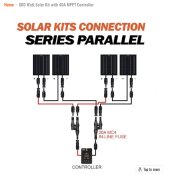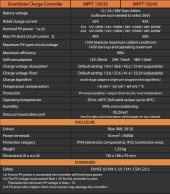Rednecktek
Solar Wizard
I only have 3 solar systems... OK 4... I can quit any time I want! :Dthen it became an obsession.
Anyways, planning oversize if you can will reduce the wear and tear on components as well. I'm rolling a 24v system at my camp when I get home, should have enough overhead left to run a mini-split in the future too.




